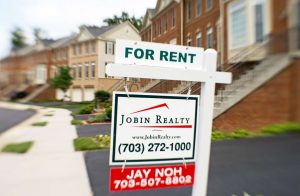FEBRUARY 4, 2020

Being able to pay for housing — along with the rest of one’s everyday expenses — is a challenge for many Americans. And increasingly, that includes middle-income Americans.
A new report from the Joint Center for Housing Studies of Harvard University calculates that 10.9 million renters spent more than 50% of their income on housing in 2018. That equates to one in four renters. Moreover, there were 6 million more cost-burdened renters in 2018 than in 2001.
A renter is cost-burdened when she must spend more than 30% of her income on housing costs and severely burdened when they spend more than half of their income on those expenses. The problem is much more predominant among lower-income Americans — 72% of renters earning less than $15,000 a year were severely burdened as of 2018, as were 43% of renters earning between $15,000 and $30,000.
But the issue is becoming much more common among middle-income Americans as the cost of housing has risen.
“Even as the overall share of cost-burdened renters has receded somewhat, the share of middle-income renters paying more than 30 percent of income for housing has steadily risen,” researchers wrote.
Nearly 56% of renters earning between $30,000 and $45,000 a year were cost-burdened as of 2018, up 5.4 percentage points from 2011. That was the largest increase in the share of cost-burdened renters across any income band in the country.
Among those who earn between $45,000 and $75,000 annually, this share increased 4.3 percentage points to 27%. The Pew Research Center defines the middle-income American household as a three-person family that earns between $45,200 and $135,600 annually.
“The spread of cost burdens up the income scale coincides with the ongoing decline in lower-cost rentals,” researchers wrote. “While the improving economy has increased the share of middle-income renters, earnings growth has not caught up with the rise in rents.”
A number of factors have caused more Americans to face hardship in affording their rental housing. In recent years, there’s been a surge in demand for rental units among high-income Americans. Households with incomes of at least $75,000 accounted for more than three-quarters of the growth in renters (3.2 million) from 2010 to 2018, the study found.
As a result, construction activity has concentrated on the upper end of the market, with builders focusing on building amenity-rich apartment buildings in popular neighborhoods designed to appeal to this higher-income renter — and fetch a higher rent. Institutional investors have also bought up a larger share of the country’s rental housing stock, renovating many of these units in order to convert them into properties that can charge a higher rent.
That’s caused the nation’s supply of low-cost rentals to shrink quickly. Low-cost rentals only made up 25% of the nation’s rental stock as of 2017, down from 33% in 2012. The largest declines occurred in states not known for their high-end housing markets: Iowa, Montana, Nebraska, North Dakota, Oklahoma and Texas.
While the researchers noted that local lawmakers have begun taking steps in many parts of the country to boost housing affordability, they argue it will take a broader effort to address the issue. “Only the federal government has the scope and resources to provide housing assistance at a scale appropriate to need,” they wrote.
Courtesy/Source: MarketWatch









































































































